You’re loving your inflatable hot tub, but tired of the heat loss? Don’t fret, we’ve got your back! In this handy guide, we’ll show you how to insulate your tub efficiently.
First, you can use insulation blankets or mats underneath the hot tub to prevent heat loss through the ground. Secondly, insulating covers or caps can be used to cover the top of the hot tub when not in use, this helps to prevent heat loss from the water surface. Lastly, using thermal floating blankets under the cover can provide additional insulation by creating a barrier between the hot tub water and the air.
You’ll discover a variety of insulation materials and get a step-by-step walkthrough on installation. Plus, we’ll share some tips and tricks for maintaining your insulation. So, stick around, and let’s keep your hot tub toasty together.
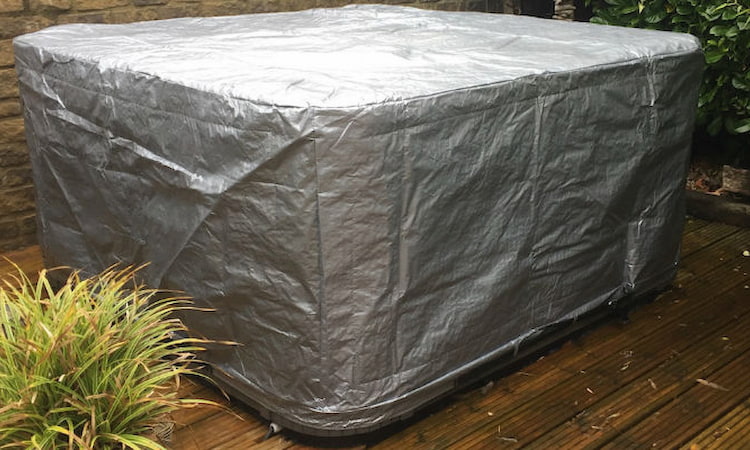
Quick Navigation
- Understanding the Importance of Hot Tub Insulation
- Different Types of Insulation Materials for Inflatable Hot Tubs
- Step-by-Step Guide to Insulating Your Inflatable Hot Tub
- Tips and Tricks for Effective Hot Tub Insulation
- Maintaining and Improving Your Hot Tub Insulation Over Time
- Frequently Asked Questions
- Conclusion
Understanding the Importance of Hot Tub Insulation
Before you dive into the process of insulating your inflatable hot tub, it’s crucial for you to understand why this step carries such importance. Insulation is not merely about maintaining the water temperature; it’s also about energy efficiency and cost savings.
Insulation reduces the amount of heat that escapes from your hot tub, thereby maintaining the water temperature for longer periods. This means you’re not constantly using energy to heat up the water, which in turn leads to reduced energy consumption. Over time, this can result in significant savings on your electricity bill.
Moreover, adequate insulation can extend the lifespan of your hot tub’s heater. With reduced heat loss, your heater won’t have to work overtime, reducing its wear and tear. This can save you from hefty repair or replacement costs down the line.
In colder climates, insulation can prevent the water in your tub from freezing, mitigating potential damage. It also helps maintain a comfortable bathing experience, regardless of the weather outside.
To summarize, insulating your inflatable hot tub is not a step to overlook. It’s a key factor in ensuring energy efficiency, cost savings, and longevity of your tub.
Related Read: How to Heat up an Inflatable Hot Tub Faster?
Different Types of Insulation Materials for Inflatable Hot Tubs
You’ll often come across a range of insulation materials when you’re looking to insulate your inflatable hot tub. These materials vary in terms of their insulating capacity, cost, and ease of installation.
Here’s a quick rundown of the most commonly used insulation materials:
| Material | Description |
|---|---|
| Foam Board | This is a popular choice due to its high insulating capacity and affordable price. It’s easy to cut and shape to fit the contours of your tub. |
| Reflective Insulation | This involves a reflective material that bounces heat back towards the tub. It’s more expensive but highly effective. |
| Insulating Blankets | These are easy to install and remove, making them a flexible option. They provide a decent level of insulation but may not be as effective as other methods. |
| Spray Foam | This provides an excellent level of insulation, but it’s more difficult to install and more expensive. |
Choose the right insulation based on your specific needs and budget. Remember, the better the insulation, the less your hot tub will cost to run. So choose wisely!
Step-by-Step Guide to Insulating Your Inflatable Hot Tub
Once you’ve chosen the right insulation material for your inflatable hot tub, it’s time to start the insulation process.
Begin by measuring the exterior of your tub. You’ll need these measurements to cut your insulation material to the correct size. Always add a bit extra to ensure a snug fit.
Next, take your insulation material and cut it according to your measurements. This might require a special cutter, so make sure you’re prepared. Once cut, wrap the insulation around your tub, ensuring it covers all sides. It’s best to start from the bottom and work your way up.
Now, secure the insulation with strong waterproof tape. Make sure it’s tightly wrapped and there are no gaps where heat could escape. Overlap the ends of the insulation for maximum effectiveness.
Lastly, consider insulating the base and cover of your hot tub. For the base, cut a piece of insulation to fit and place it under the tub. For the cover, you can add an insulated blanket on top when not in use.
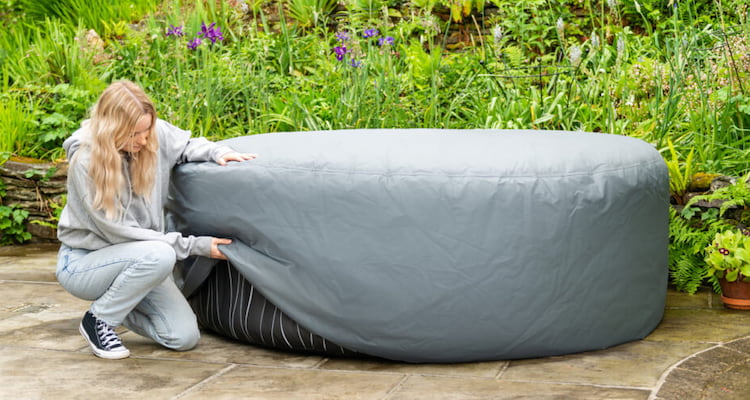
Tips and Tricks for Effective Hot Tub Insulation
Don’t forget to pay attention to these handy tips and tricks to make your hot tub insulation more effective. Proper insulation not only retains heat but also saves energy costs. Moreover, it extends the life of your hot tub.
Start by checking the existing insulation. If it’s insufficient, don’t hesitate to add more. Use high-quality insulating materials like spray foam or thermal wraps. They’re not just effective but also durable.
Remember, every part of the hot tub needs insulation, not just the bottom. Don’t overlook the sides and the top. A good insulating cover is a must. It prevents heat loss and keeps the water warm for a longer period.
Here is a table summarizing effective insulation tips:
| Tips | Why It’s Important | Recommended Material |
|---|---|---|
| Check existing insulation | To ensure heat isn’t escaping | Thermal wraps |
| Insulate every part | To retain heat from all directions | Spray foam |
| Use a good insulating cover | To prevent heat loss from the top | Hot tub cover |
Maintaining and Improving Your Hot Tub Insulation Over Time
Insulating your hot tub isn’t a one-time job, and you need to regularly check and improve the insulation to ensure its efficiency. Over time, the insulation can degrade, reducing its effectiveness. To maintain it, you should inspect it at least twice a year, preferably in the spring and fall. Look for signs of wear and tear such as thinning or dampness. If you spot any, replace or add more insulating material as needed.
In addition to regular inspections, there are a few proactive steps you can take to improve your hot tub’s insulation. For example, consider using a thermal blanket under the hot tub cover. This traps heat and prevents it from escaping, boosting the insulation’s performance.
Related Read: What Can I Put Under My Inflatable Hot Tub?
Another strategy is to add insulation around the tub’s plumbing. The pipes can lose a lot of heat, especially in colder weather. By insulating them, you’ll keep the water warmer and lower your heating costs.
Lastly, don’t forget about your hot tub cover. It should fit snugly and be in good condition to provide effective insulation. If it’s worn out, replace it. It’s a small price to pay for the energy savings and extended lifespan of your hot tub.
Frequently Asked Questions
You’re asking about the cost of insulating an inflatable hot tub. It varies, mainly depending on the insulation method you choose. However, you’re typically looking at anywhere from $50 to $200 for most DIY solutions.
You don’t typically need to replace your hot tub’s insulation unless it’s damaged. If you notice a significant increase in energy consumption or decreased heat retention, it’s time to consider replacing the insulation.
Absolutely, you can insulate your inflatable hot tub on your own. It’s not overly complicated. With the right materials and a bit of time, you’ll manage it just fine. But professional help ensures perfection.
Yes, insulating your inflatable hot tub can affect its portability. While it’ll increase energy efficiency, the added material may make it heavier and more cumbersome to move. You’ll need to balance efficiency with mobility.
If you don’t insulate your inflatable hot tub properly, you risk increasing energy consumption, reducing water heat retention, and potentially damaging the tub’s motor due to overworking. It’s vital for efficiency and longevity.
Conclusion
In conclusion, insulating your inflatable hot tub is a practical, cost-effective move. It preserves heat, reduces energy usage, and extends your tub’s lifespan. Using the right insulation material and following the step-by-step guide, you’ll see improvements in performance and energy efficiency.
Remember to maintain and periodically improve your insulation. With these tips, you’ll get the most out of your hot tub, enjoying warm, relaxing soaks for years to come.


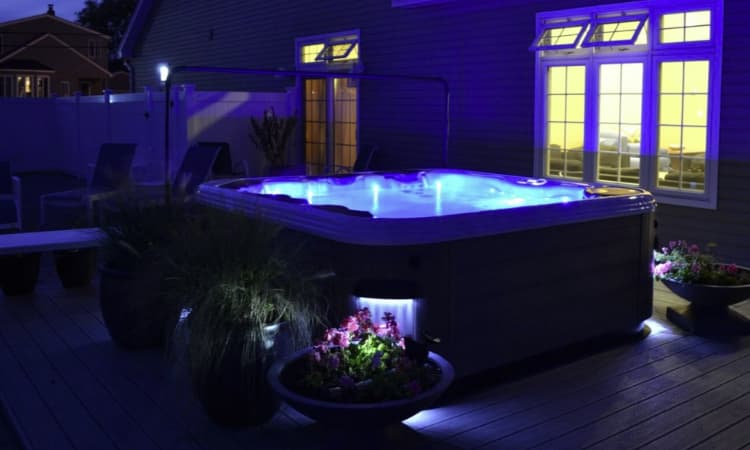
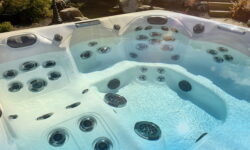
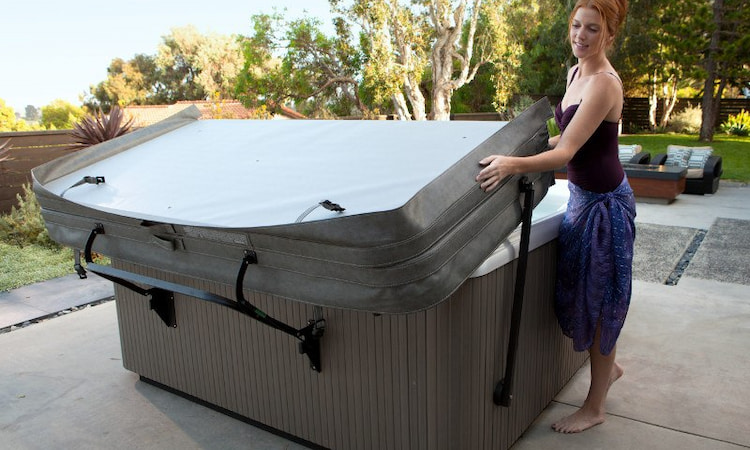

![How Much Electricity Does a Hot Tub Use? [Per Day, Week, Month] how much electricity does hot tub use](https://hottubtales.com/wp-content/uploads/2023/03/how-much-electricity-does-hot-tub-use.jpg)